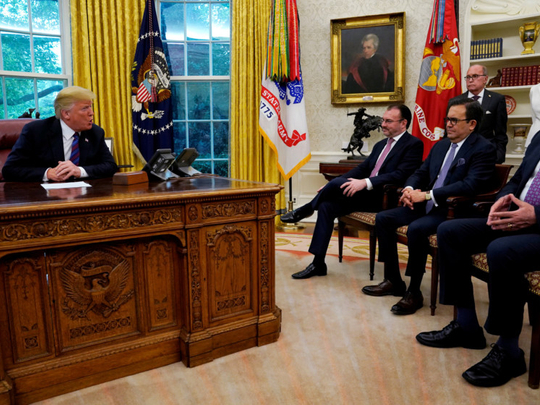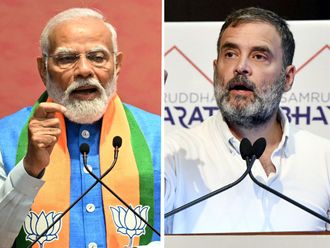
United States President Donald Trump asserted on Friday that the new North American Free Trade Agreement (Nafta) deal will see “cash and jobs pouring” into the United States. However, while the president has claimed the renegotiation is a “wonderful” win for his “America First” approach, the final concessions from Canada and Mexico are not as big as he had previously claimed possible.
To be sure, the deal contains some gains for the US, including a limited opening of Canada’s dairy markets, but Washington has also agreed to Ottawa’s request to preserve a trade dispute settlement mechanism while protecting Canada’s auto industry from potential further US tariffs. This underlines that there will be significant continuities between the new treaty and Nafta, which is one reason why the US president has asked that last week’s deal be rebranded as the United States-Mexico-Canada Agreement (USMCA) to cover his political back after the high expectations he generated.
Despite the fact that Trump has not delivered all that he had pledged, he will assert that the deal delivers on one of his key 2016 election promises. It is certainly true that he robustly challenged Mexico City and Ottawa through the process with a frequent war of words, undercutting significant goodwill in the process.
The agreement will also give Trump renewed confidence that his agenda can continue to reshape the international political economy. This is especially so after his earlier decisions to withdraw US participation from deals like the Trans-Pacific Partnership; launch new trade sanctions against world powers from the European Union (EU) to China; and also threaten US withdrawal from the World Trade Organisation.
Trump’s negotiation strategy, of dividing Mexico and Canada, put intense pressure on Ottawa to make a deal after the bilateral agreement between the US and Mexico several weeks ago. This posed an acute dilemma for the administration of Prime Minister Justin Trudeau, given that Nafta underpins three quarters of exports that Canada sends south of the US border and 2.5 million jobs in the country depend on this trade.
However, the stakes in play were high not just for Canada, but also multilateralism, with the trilateral accord between Ottawa, Washington and Mexico City on the brink of collapse. The reason why the end of Nafta — which today accounts for more than $1 trillion (Dh3.67 trillion) in annual trade — would have been so significant is that, upon signing in 1994, it was the most comprehensive trade agreement outside the EU. And it was also the first trade-major trilateral accord negotiated between a developing country (Mexico) and developed counterparts (United States and Canada).
Yet, despite having significant business support, Nafta’s standing had been eroded by criticism from both the US political Left and Right. Both, for instance, have blamed it for contributing to a hollowing out of the US manufacturing industry, partly because of increased trade deficits with Mexico and Canada, and Trump called it “the worst trade deal maybe ever signed anywhere”.
Had last week’s deal not been cut, there would have been a significant and growing chance that the trilateral accord would have collapsed. Indeed, Trump informed Congress last month of his intent to sign a bilateral Mexican trade agreement this month in that scenario and tweeted “there is no political necessity to keep Canada in the new Nafta deal. If we don’t make a fair deal for the US after decades of abuse, Canada will be out”.
Moving forward, the deal now turns to legislative scrutiny, including in the US Congress. The goal for Trump, Trudeau and outgoing Mexican President Enrique Pena Nieto is to sign it before the latter is replaced on December 1 by populist Andres Manuel Lopez Obrador. It is feared in Washington that unless a deal can be signed before Lopez Obrador comes into office, he may throw a spanner into the works.
Lopez Obrador had said in June, for instance, that if Nafta collapsed this “cannot be fatal for Mexicans, our country had a lot of natural resources, a lot of wealth”. He also asserted that, in this scenario, he would seek to redirect the country’s economy towards internal markets and revive the rural economy.
With the US midterm ballots next month, the White House intends to try to get the trade legislation approved in the so-called ‘lame-duck’ session of Congress after the November 6 elections and before new legislators are sworn in on January 6. While approval is now significantly more likely than not, this is not certain. Knowing this, Trump has tweeted that “Congress should not interfere with these negotiations”.
Taken overall, all three country leaders can plausibly claim a win after the USMCA breakthrough last week. Yet, despite Trump’s assertion that it is a huge success for his “America First” approach, his negotiating approach has done damage to alliances with Mexico and Canada, and concessions have not been as big as he had previously sought, highlighting the significant continuities the new deal has with Nafta.
Andrew Hammond is an Associate at LSE IDEAS at the London School of Economics.












